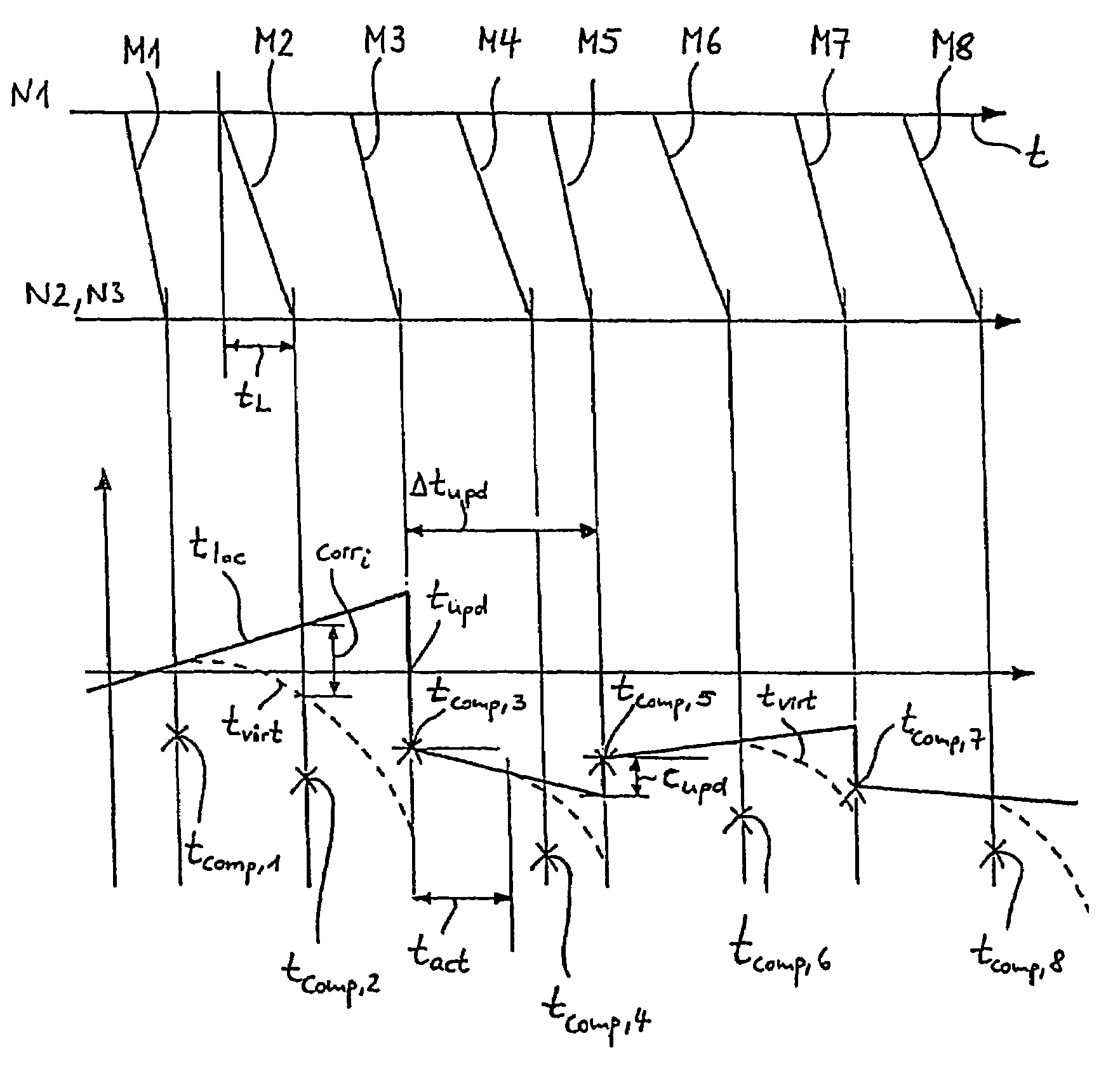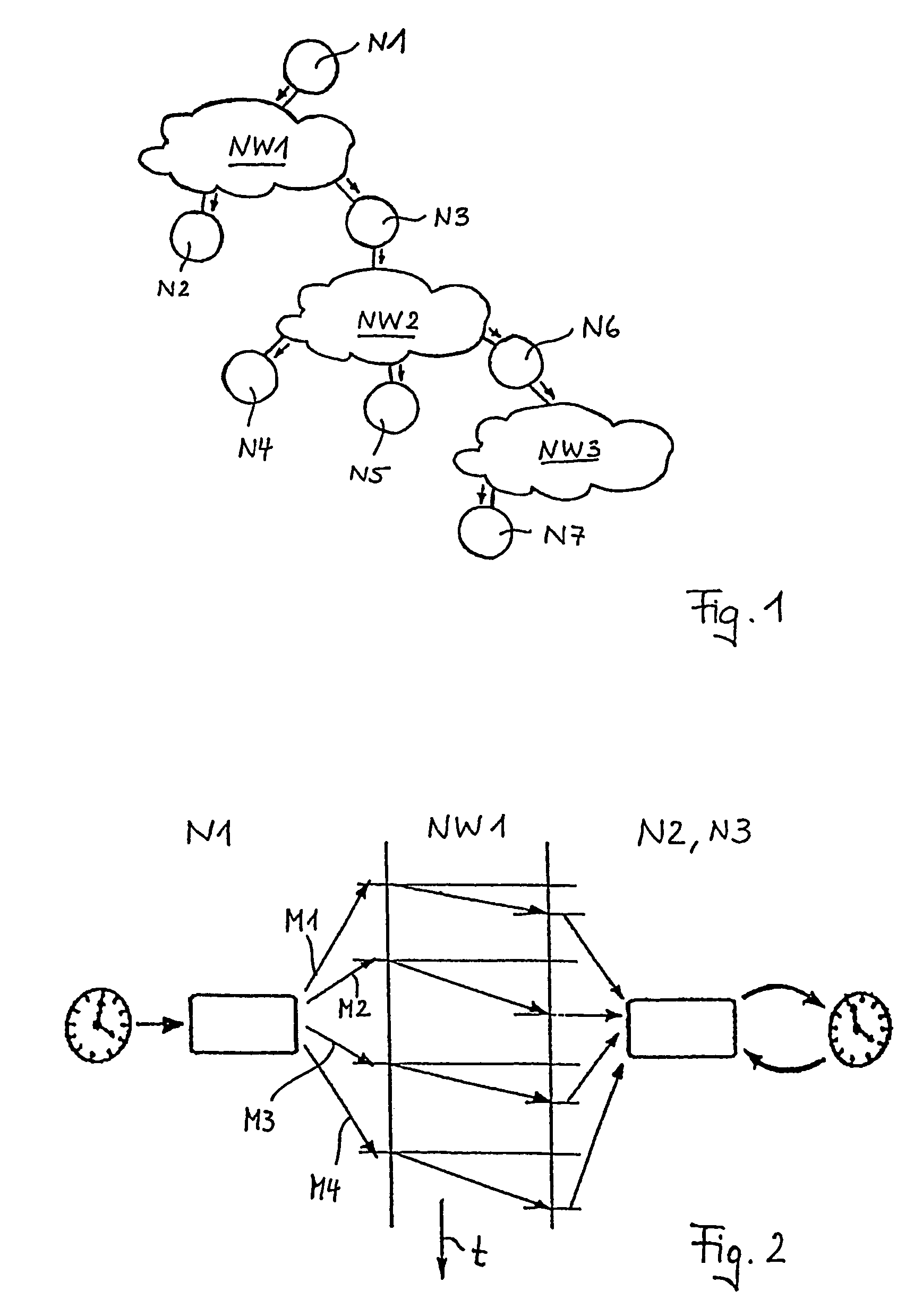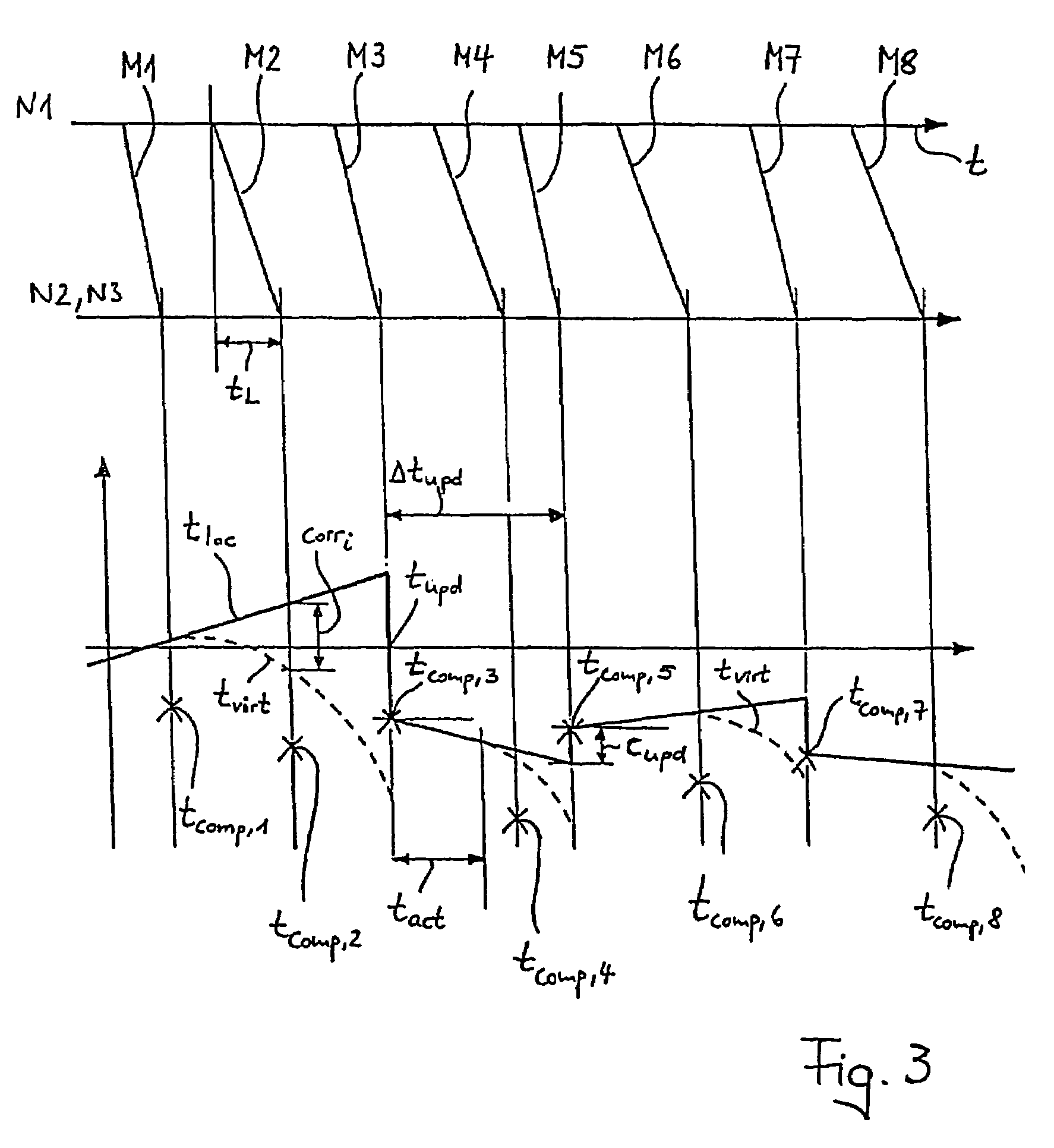Method for synchronization in networks
a network and network technology, applied in the field of network synchronization, can solve the problems of time delay during the transportation of such messages, limited local time synchronization, and less accurate synchronization, and achieve the effect of outstanding quality
- Summary
- Abstract
- Description
- Claims
- Application Information
AI Technical Summary
Benefits of technology
Problems solved by technology
Method used
Image
Examples
Embodiment Construction
[0031]FIG. 1 shows a number of nodes N1, N2, N3, N4, N5, N6, N7, which are connected to one another by intermediate (sub-)networks—in this case the networks NW1, NW2 and NW3. The arrows symbolically represent the direction in which time messages are transported from a node via a network to another node.
[0032]First of all, only the nodes N1-N3 and the (sub-) network NW1 located in between them will be considered, in a first section. The node N1 in this section under consideration is a higher-level node (“master”), which sends time messages via the network NW1 to the lower-level nodes N2 and N3 (“slave”).
[0033]These time messages each contain the local time at the higher-level node, at that time at which they are sent, as can be seen in the left-hand third of FIG. 2 (in addition, they may also contain a reference to a global reference time, for example UTC or GMT) . By way of example, the illustration in FIG. 2 shows that a time message M1-M4 is sent via the network NW1 to the lower-l...
PUM
 Login to View More
Login to View More Abstract
Description
Claims
Application Information
 Login to View More
Login to View More - R&D
- Intellectual Property
- Life Sciences
- Materials
- Tech Scout
- Unparalleled Data Quality
- Higher Quality Content
- 60% Fewer Hallucinations
Browse by: Latest US Patents, China's latest patents, Technical Efficacy Thesaurus, Application Domain, Technology Topic, Popular Technical Reports.
© 2025 PatSnap. All rights reserved.Legal|Privacy policy|Modern Slavery Act Transparency Statement|Sitemap|About US| Contact US: help@patsnap.com



